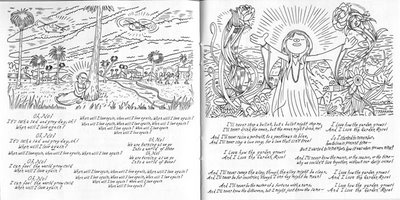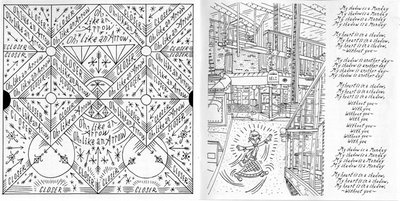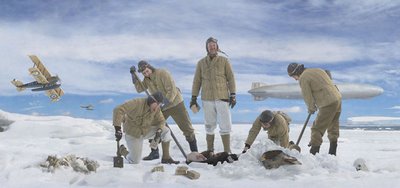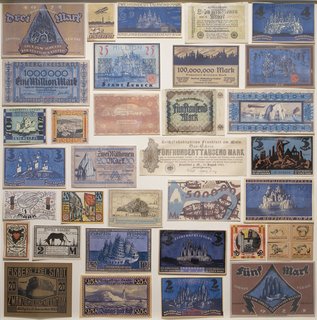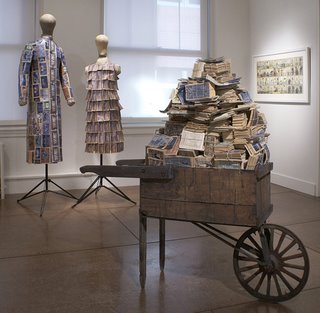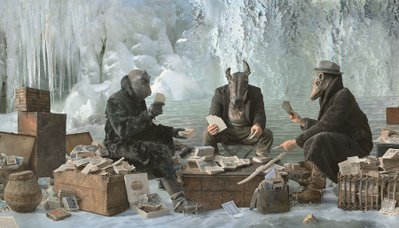Ron Rege Jr.
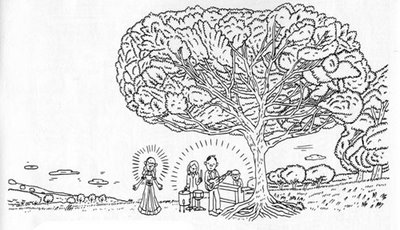
One of the most dazzling artists to emerge from Massachusetts in the past decade is Ron Rege Jr. And he emerged right the hell out of here. But he returns as the percussionist and artist for the sweetiepie band Lavender Diamond, which plays at Boston’s Museum of Fine Arts tomorrow.
Rege grew up in Quincy and Plymouth, studied at MassArt, and from 1988 to ’98 lived in Mission Hill and Cambridge, which is when we became friendly. He was part of the rocking and widely influential Boston-Providence art-comics scene of the past decade, whose most well known (art world) denizens are Fort Thunder and Paper Rad.
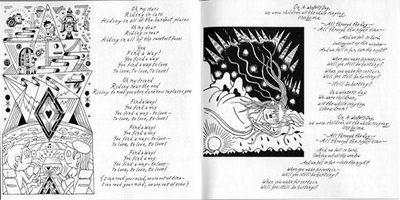
Inspired by E.C. Segar’s “Popeye,” Rege plumbed the abstractions of the cartoon language – particularly all the floating geegaws – to create a psychedelic Cute Brut style that shimmers with longing and worry and awe. He shifts back and forth between autobiographical tales and unnerving apocalyptic fantasies, like his book “Skibbber Bee-Bye,” which was published by Tom Devlin’s now-defunct Highwater Books in Cambridge in 2000 (Devlin also published my work) and has since been republished by Montreal’s Drawn & Quarterly.
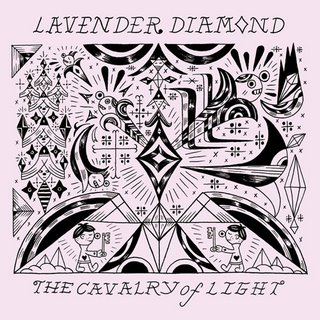 Chris Ware blurbed it: “Ron Rege Jr. is probably the greatest 'new cartoonist' (whatever that is) I can think of. In the tradition of ‘pioneers’ like Herriman, Sterrett, McCay, et al, in that he has wholly reinvented the comic strip language to suit his own idiosyncratic vision; his apparently simple yet beautifully complex little line drawings seem to spring from the very essence of ‘the form.’”
Chris Ware blurbed it: “Ron Rege Jr. is probably the greatest 'new cartoonist' (whatever that is) I can think of. In the tradition of ‘pioneers’ like Herriman, Sterrett, McCay, et al, in that he has wholly reinvented the comic strip language to suit his own idiosyncratic vision; his apparently simple yet beautifully complex little line drawings seem to spring from the very essence of ‘the form.’”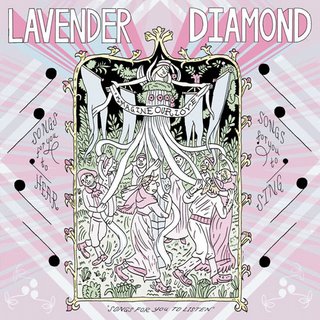 Rege decamped to the San Francisco Bay Area in 1998, but returned East for a stint in Wakefield, Rhode Island, in 2003 and ’04. He has since lived in Los Angeles. Lately, he’s published “The Awake Field" and new editions of his ongoing series “Yeast Hoist." And he’s in fine form in his album art (reproduced with permission here) for Lavender Diamond’s EP “The Cavalry of Light,” which was reissued by Matador Records in January, and album “Imagine Our Love,” which Matador released May 8.
Rege decamped to the San Francisco Bay Area in 1998, but returned East for a stint in Wakefield, Rhode Island, in 2003 and ’04. He has since lived in Los Angeles. Lately, he’s published “The Awake Field" and new editions of his ongoing series “Yeast Hoist." And he’s in fine form in his album art (reproduced with permission here) for Lavender Diamond’s EP “The Cavalry of Light,” which was reissued by Matador Records in January, and album “Imagine Our Love,” which Matador released May 8.